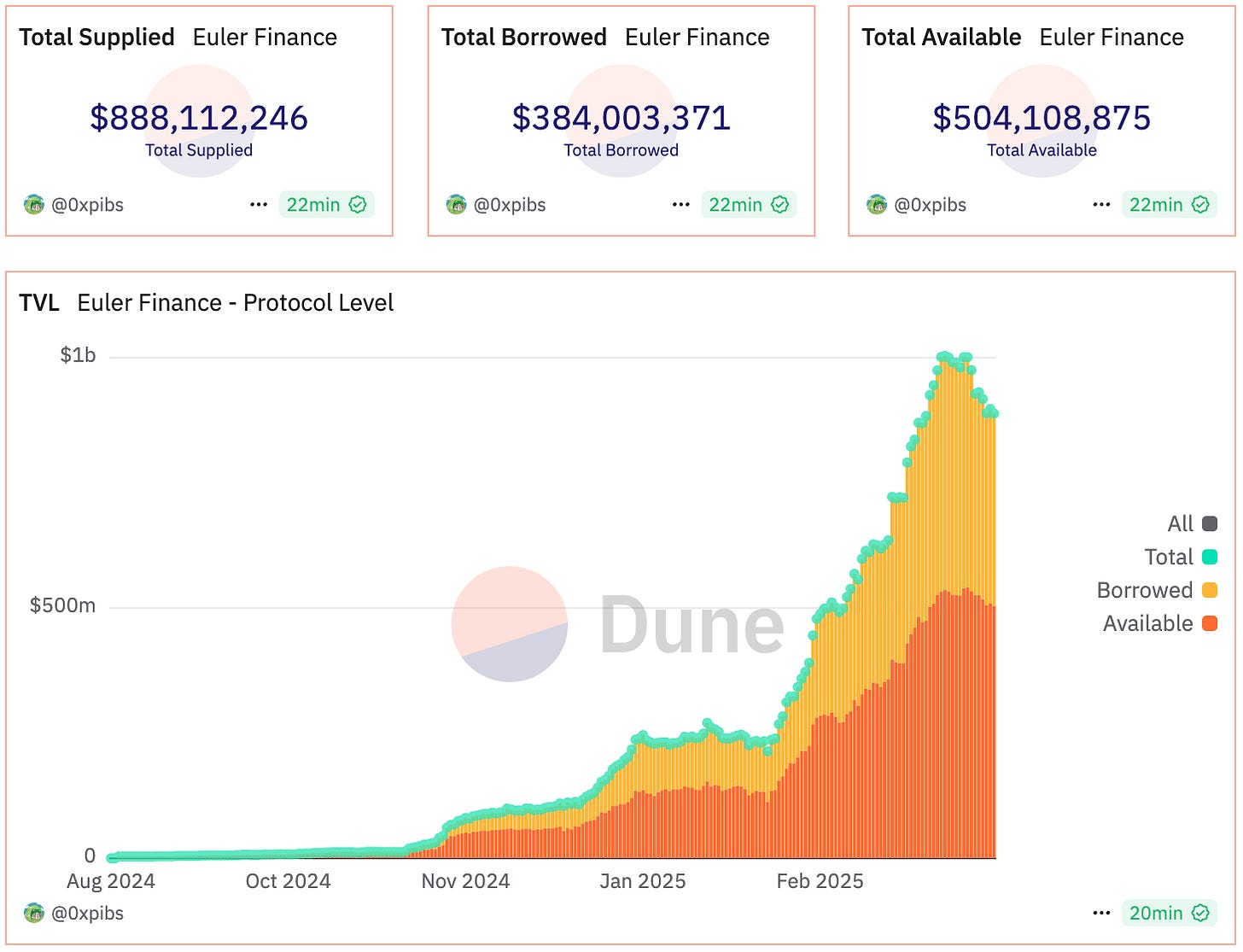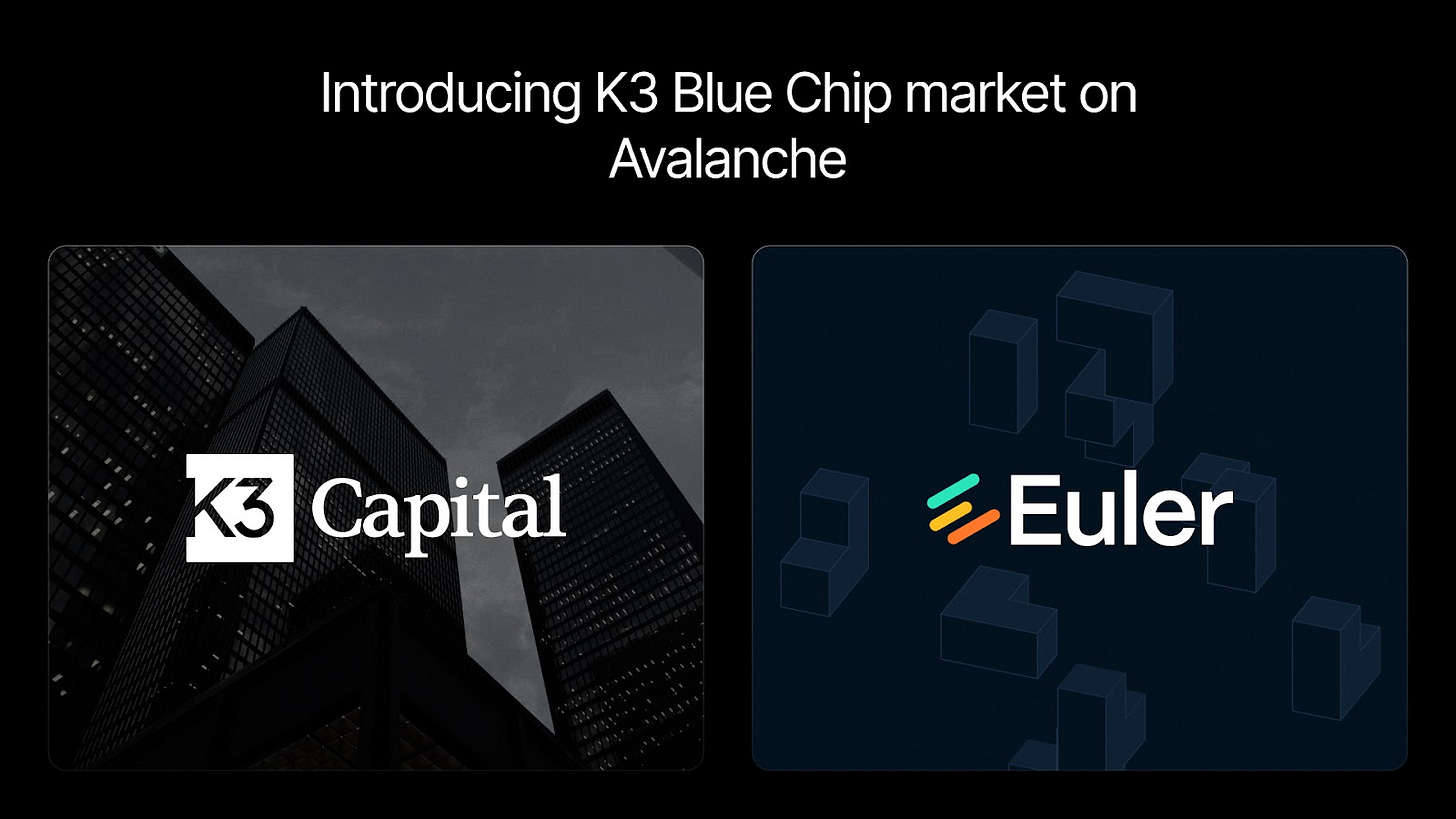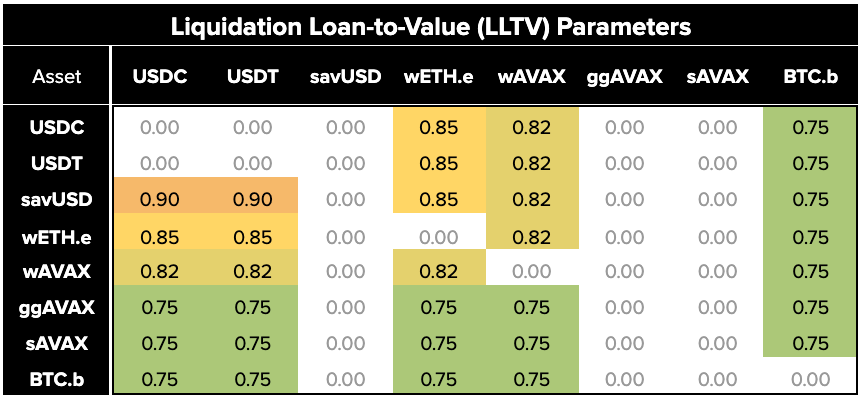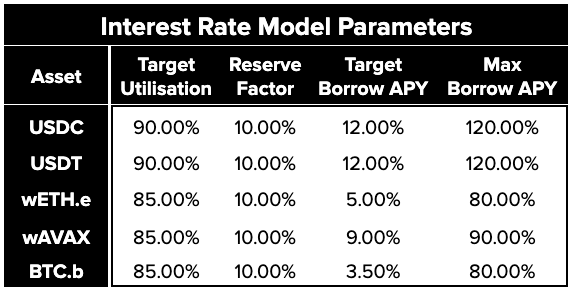Euler Finance: Protocol Design and K3 Blue Chip on Avalanche
In September 2024, Euler Finance launched v2, establishing itself as the credit layer for on-chain finance. Building upon its predecessor, Euler v2 introduces a modular architecture, allowing users to create highly customizable lending and borrowing markets.
Unlike Euler v1, which was designed for specific use cases, Euler v2 turns into a meta-lending protocol, enabling specialist risk curators to create and manage customizable vaults with enhanced functionality:
Expanded Asset Support: Euler v2 allows the collateralization of any digital asset, removing previous token standard restrictions.
Enhanced Risk Management: The introduction of subaccounts, collateral rehypothecation, batching, and oracle flexibility optimizes capital efficiency.
Automated Market Functions: Features like gasless transactions, unified liquidity, and custom liquidation flows make lending and borrowing more seamless than ever before.
To understand how Euler Finance stands out from its competitors, we will be covering Euler’s protocol design, Ethereum Vault Connector (EVC), and more, alongside with the K3 Blue Chip market we recently launched on Avalanche.
Euler’s Protocol Design
Euler’s lending framework revolves around isolated lending markets. Unlike monolithic lending platforms like Aave and Compound, Euler allows for granular risk management at an individual asset level.
Permissionless Market Creation: Any ERC token can be listed in a lending market permissionlessly. The market curator is free to onboard new assets or change the parameters of an existing market as token issuers come to the space, or market dynamics change.
Borrowable vs. Collateral-Only Assets: Assets can either be used solely as collateral or also be borrowable.
Dynamic Interest Rate Model (IRM): Adjusts rates based on utilization, improving capital efficiency and return on the capital deployed.
Risk Isolation: Each lending market operates independently, preventing systemic risk.
Governance & Risk Management: Each vault has separate governance and LTV thresholds.
By implementing these features, Euler enables a highly customizable and capital-efficient lending experience while mitigating liquidity risks. It lets liquidity providers participate in the markets that suit their risk appetite in terms of collateral exposure, while giving risk curators enough flexibility to swiftly onboard new, trending assets on the platform.
To better understand Euler’s competitive advantage when it comes to capital efficiency, we should take a closer look at the contract architecture.
Ethereum Vault Connector (EVC)
Euler’s Ethereum Vault Connector (EVC) is an open-source interoperability layer that connects credit vaults within the Euler ecosystem, enabling vaults to recognize deposits in other vaults as collateral. The EVS is supported by Euler Labs that allows anyone to launch a product on top of it.
The advantage of EVC is its ability to abstract away complexity common in lending protocols, allowing developers to focus on creating customized credit products tailored to specific types of users such as stablecoin lending, yield aggregators, margin trading apps, and structured financial products. Additionally, EVC supports diverse asset classes, including RWAs (Real-World Assets), NFTs, IOUs, synthetics, and more, making it a versatile tool for innovation in DeFi.
Interest Rate Model
Euler Finance utilizes an Interest Rate Model (IRM) that dynamically adjusts borrowing costs based on market conditions. The Linear Kink IRM helps maintain balance between supply and demand, ensuring an optimal borrowing environment for users while preventing liquidity shortages for lenders. Users who borrow from Euler vaults pay interest on their outstanding debts, which is then directed to lenders as compensation for their liquidity provision. Additionally, a variable cut of the accrued borrowing interest is withheld as a fee, which is equally split between the vault governor and Euler DAO to incentivise active risk management and protocol development, respectively.
How Euler’s IRM Works:
The IRM uses an industry-standard utilization-based adjustment system, where interest rates gradually increase alongside vault’s utilization level. For example, if a vault has $10 million in deposited liquidity and borrowers have taken out $5 million, the utilization rate is 50%, and interest rates remain relatively low. However, as borrowing increases, approaching “Target” utilization levels (also known as “kink”), the interest rates rise with a steeper slope, discouraging excessive borrowing and ensuring that liquidity remains available for existing lenders looking for a way out.
Liquidation & Risk Management
Euler integrates a modular oracle system to fetch price data from multiple sources, including Chainlink, Chronicle, RedStone Push/Pull, Pyth, Balancer Rate Providers, Uniswap V3, Pendle, ERC-4626, and Fixed Rates. These decentralized oracles ensure that asset prices remain accurate and up-to-date, which is crucial for maintaining a reliable liquidation mechanism. The oracle router contract maps each vault’s asset to its respective collateral oracle, allowing for real-time price tracking.
Liquidation on Euler occurs when a borrower’s risk-adjusted collateral value falls below the required Loan-to-Value (LTV) threshold. At this point, automated bots execute liquidations, allowing liquidators to purchase discounted collateral from borrowers who fail to maintain sufficient collateralization. The discount rate scales based on the severity of under-collateralization, ensuring that liquidations are financially viable and fairly incentivized. By using this dynamic approach, Euler avoids excessive penalties while maintaining market solvency.
To prevent harmful liquidation cascades, Euler vaults feature customizable parameters, including cool-off periods to prevent immediate liquidations after a loan is initiated. Users can also set custom stop-loss conditions, slippage limits, and liquidation rewards. This protects against price manipulation or sudden market swings that could trigger unnecessary liquidations, allowing borrowers to manage risk more effectively and minimize potential losses.
Additionally, Euler supports bad debt socialization, where any remaining liabilities from unsuccessful liquidations are distributed across vault depositors to maintain protocol stability. However, vault governors can disable this feature if they prefer an alternative risk management strategy. Euler Labs maintains an open-source liquidation bot, encouraging MEV participants to optimize the liquidation process and ensure vault solvency.
Governed vaults allow modifications to LTV ratios, interest rates, and collateral parameters in response to market conditions or to facilitate particular strategies. In contrast, ungoverned vaults remain immutable once deployed, providing fixed-parameter lending environments. The protocol also enforces strict governance guidelines to prevent unauthorized changes and ensure long-term protocol integrity.
Speaking of risk and security, Euler v2 is by far the most audited contract on the market. It underwent 31 separate smart contract reviews, costing roughly $4 million in total.
A Growth Story
Since the launch of Euler v2 less than seven months ago, the protocol has successfully entered the top 15 money markets across all networks, surpassing teams with aggressive liquidity mining budgets and products that have been in existence for years.

Growing a money market from scratch on Ethereum Mainnet is a challenging task to say the least due to the liquidity moat of existing marketplaces like Aave, Compound and Morpho. Euler’s significant TVL growth, despite minimal incentives, highlights the strength of its protocol design and serves as a testament to the team's effective business development efforts to commercialize it.
Instrumental in their success story is their multichain approach, particularly its ability to quickly expand to sidechains and Layer 2s. To illustrate their pace, the team has integrated with Avalanche, Unichain, BeraChain, Swell, Monad and Base in just the past month. In today’s multichain ecosystem, we believe that speed to market and the ability to quickly onboard innovative assets, all while maintaining system security, will be critical to Euler's continued success.
K3 Blue Chip Market Lending on Avalanche
As reflected in its name, the K3 Blue Chip market offers an isolated exposure to battle-tested token issuers, supporting the largest and most liquid assets on the Avalanche network:
The native versions of the largest fiat-backed stables (USDT and USDC);
Avalanche’s native network token (wAVAX), Benqi’s liquid staked AVAX derivative (sAVAX) and GoGoPool’s liquid staking token (ggAVAX);
Avalanche native Yield-bearing stablecoin by Avant Protocol (savUSD).
Each asset (with the exception of USDT & USDC) are both borrowable and accepted as collateral, with predefined Liquidation Loan-to-Value (LLTV) ratios: collateral (row), debt (column)
The LLTV are set by taking into account the on-chain liquidity of an asset and its expected volatility (or the volatility of its underlying). To prevent fraudulent recursive borrowing against a single asset, the LLTV for each token is set to zero when borrowing against itself.
To further protect the market from potentially toxic collaterals due to technical or economic exploits, we have set limits to both the maximum absolute amount of each collateral that could be supplied on the market:
Finally, the interest rate model parameters associated with the K3 Blue Chip market are summarized below:
“Target Utilisation” refers to the kink, above which the interest rate increases at a much faster rate.
The “Reserve Factor” means the effective fee charged on every dollar of interest paid by borrowers on an XYZ asset. The fee acts as an incentive for us to actively manage the risk parameters of the market and Euler to continue developing their stellar product.
“Target Borrow APY” is the Annualized Borrowing Rate when “Target Utilisation” is achieved.
Finally, “Max Borrow APY” refers to the maximum borrowing rate as market utilization approaches 100%
Finally, for most of the assets, we used Chainlink and Pyth’s battle-tested oracles, combined with the fundamental exchange rates of the asset derivatives.
Users who supply or borrow USDT will be equally incentivized by Avalanche, with rewards distributed over the next 3 weeks with the possibility of extension upon reaching major TVL goals.
To see the latest APR’s, available liquidity and remaining incentives go directly to view the K3 Capital Blue Chip Lending Market.
Conclusion
Euler Finance v2 has established itself as a next-generation credit layer for DeFi, introducing a modular and customizable lending framework that enhances capital efficiency while mitigating systemic risks. By enabling permissionless market creation and specialist risk curators, Euler empowers users with greater flexibility in managing collateral, borrowing, and risk exposure.
With Ethereum Vault Connector (EVC). Euler’s position by enabling cross-vault collateralization, allowing diverse asset types—including RWAs, NFTs, and synthetics—to be leveraged within lending markets. Additionally, its dynamic interest rate model and multi-source oracle infrastructure ensure a balanced and resilient borrowing ecosystem.
A testament to its growing influence, we recently launched a Blue Chip Market on Euler, offering exposure to highly liquid, battle-tested assets within a secure and capital-efficient lending environment. As reflected in its name, the K3 Blue Chip market offers an isolated exposure to battle-tested token issuers, supporting the largest and most liquid assets on the Avalanche network.
K3 Blue Chip Market: https://app.euler.finance/?market=k3-avalanche&network=avalanche X: @k3_capital For latest update: @k3alpha For contact: @K3Capital











